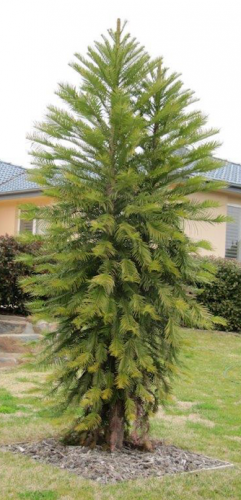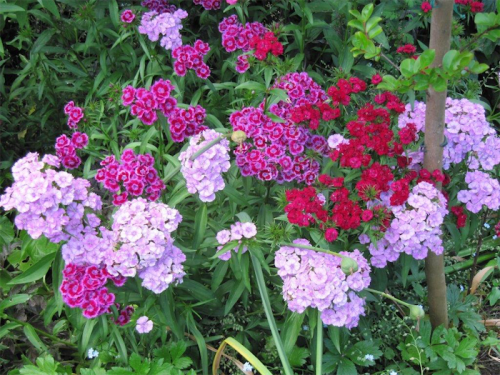I’M old school when it comes to Christmas trees and always prefer a living tree. Our current potted Christmas tree has grown in the last 12 months and, after this Festive season, will need repotting with some root pruning to prevent it becoming root bound.

A potted tree will last many years, plus you can use lights on a living tree without any danger, unlike some of the tinsel, artificial trees.
The use of a conifer for religious ceremonies goes back several thousand years, although specifically as a Christmas tree only in the last couple of hundred years. It originated in Europe with Picea abies or Norway Spruce as the traditional Christmas tree.
Norway donates a large specimen to London, Washington and Edinburgh each Christmas as a sign of gratitude for the aid these countries provided during World War II.

Alternatively, why not have an Aussie Christmas tree with a Wollemi Pine? They grow well in pots and (as shown) transfer to the garden when size becomes an issue.
A PLACE to go for Christmas gifts is the local garden centre where the selection of gifts, other than specifically for the garden besides actual plants, is extensive. The bottom line is the gift voucher, which will allow the recipient to select whether they want plants or simply a bag of fertiliser. For the culinary minded make up a Christmas hamper with a wicker basket filled with a selection of small pots of kitchen herbs complete with a container of certified organic Multicrop Seaweed plant food.
FOR friends new to gardening there is one book they simply cannot do without, “The Canberra Gardener”. This is specifically written by members of the Horticultural Society of Canberra covering all aspects of gardening for Canberra and Queanbeyan. It’s available from most bookshops and always amid thge wide range of books at the Botanic Gardens bookshop.
For anyone rapt in native plants, a perfect choice is “Australian Plants for Canberra Region Gardens” (published by the Society for Growing Australian Plants Canberra region).
Or how about membership of the “Friends of the Australian National Botanic Gardens”. Some of the benefits include the Friends’ Lounge with use of the extensive borrowing library of books and CDs. Membership also includes a year-round, three-hour, free-parking voucher, discounts at the bookshop and Pollen Café and advance information of the monthly lectures. More information via info@friendsanbg.org.au

It’s unfortunate that many people shun “English” plants in gardens here because many, especially the Mediterranean-region plants, are ideally suited to our harsh climate with long periods of dry.
Another example so beloved of cottage gardeners is the Dianthus family, commonly known as “pinks”. My edition of the plant dictionary “Hortus Third” lists more than 200 varieties and cultivars – and this is the 1976 edition! There are possibly another 100 that have been bred since then.
Dianthus grow around the whole of the Mediterranean region from the heat of Greece and Turkey to Morocco. Most Dianthus are perennials, although the old-fashioned Dianthus barbatus or Sweet William, of Shakespeare’s gillyflower, is a biennial.
Many long-time gardeners will be familiar with the old favourites such as Dianthus “Doris” or D. “Mrs Sinkins”.
THANK you to my many readers for the letters, phone calls and emails over the past year. I wish you all a wonderful Christmas holiday and look forward to writing more in 2018.
Who can be trusted?
In a world of spin and confusion, there’s never been a more important time to support independent journalism in Canberra.
If you trust our work online and want to enforce the power of independent voices, I invite you to make a small contribution.
Every dollar of support is invested back into our journalism to help keep citynews.com.au strong and free.
Thank you,
Ian Meikle, editor




Leave a Reply